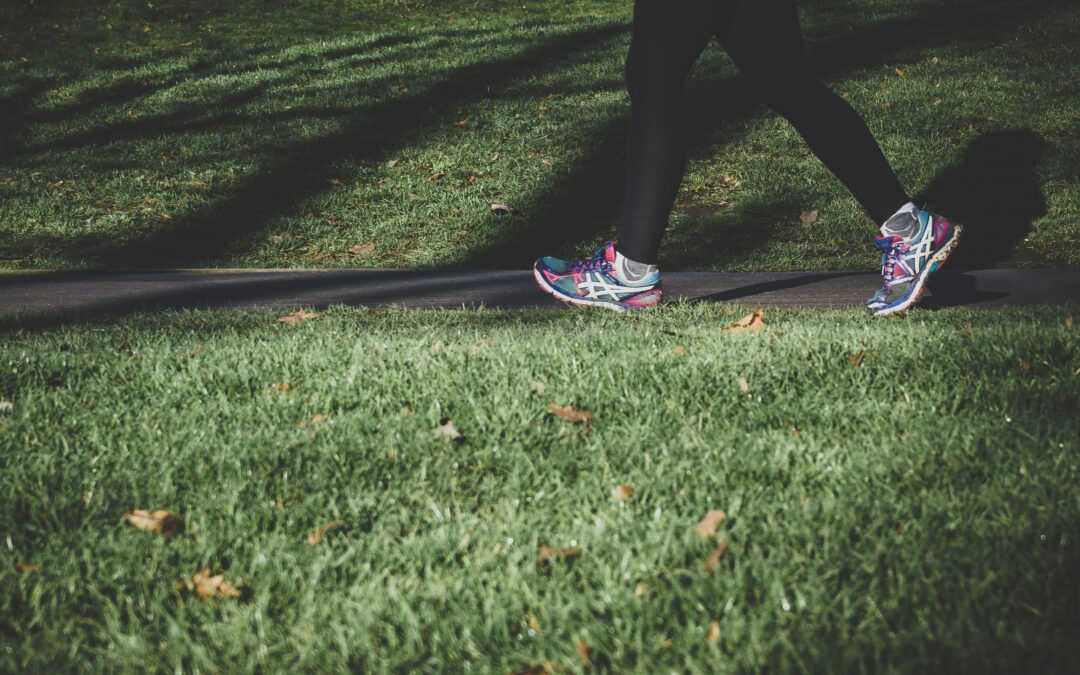People of all walks of life are still walking and loving it. While there is no doubt that taking a nice walk while blasting your favorite playlist or podcast can feel amazing. You may wonder if walking can actually impact your health. Should you really be aiming to walk “10,000 steps a day”? Isn’t that a lot of steps? How many miles is that anyway?
To answer that controversial question here is my response. Small lifestyle changes, taking a few more steps per day or walking a little more each week, can have a big impact on your health. Consider the alternative not moving, not going for walks, and not exercising and living an inactive lifestyle is leading to a modifiable risk factor for death. Too little movement and too much sitting can lead to profoundly detrimental health consequences, including an increased risk of chronic diseases, such as diabetes, colon cancer, and cardiovascular disease.
Any type of movement from walking, jogging or running to resistance training or yoga and pilates can positively affect your long-term future health. For most people walking is a fantastic place to start. Walking is a great form of exercise not only for physical health but also mental health. Walking provides repeated resistance to the muscles and bones of the lower body which helps them to stay strong. Join mobility improves at the hips, knees and ankles and it can increase your total daily energy. Which will boost endorphins, the bodies own mood enhancer that reduces stress, increases pleasure and improves mood.
How Many Steps Should I Walk a Day?
Guidelines for physical activity recommends at least 30 minutes of moderate-intensity three times a week. Physical activity five days per week. Twenty minutes of vigorous activity three days a week, or a combination of both three or more days a week. We often hear that we should take at least 10,000 steps per day.
The 10,000 steps per day is recommended – that does not mean walking less is useless. Walking 8,000 steps could lead to potential health benefits as well. People who walked 8,000 steps daily (about four miles) had a 50 percent lower risk of death than those who walked 4,000 steps. With that being said, walking more could be even more beneficial. People who walk 12,000 steps per day actually have a sixty-five percent lower risk of dying from illness (heart disease or cancer etc.).
Walking 8,000 steps one to two days per week can lower mortality risk rate. People who don’t walk as much per day have a higher mortality risk. It has been shown in studies over a ten-year period that people who take 8,000 steps per week actually decreased their risk for health and cardiovascular related deaths.

How Many Steps Are in a Mile?
It may be hard to visualize how many steps 8,000, 10,000 or 12,000 steps are in a mile. Here is the breakdown… 2,000 steps is approximately one mile, 8,000 steps is approximately four miles and 10,000 steps is approximately five miles. Your height and your stride length will change how many miles you walked per step. Remember these number of steps are the total daily steps. You would be surprised by how many steps you can accrue while doing things like grocery shopping, walking the dog, cleaning the house, doing laundry, walking to the bus or train, doing yard work, playing with the children, getting the mail, etc..
The Benefits of Walking
If you prefer to walk by time than distance or steps, the benefits of walking can be seen by walking as little as 10 to 20 minutes per day.
The upsides of walking include:
*Mental Clarity
*Stress relief
*Improved Heart Health
*Reduced Blood Pressure
*Joint Mobility
*Bone Strengthening
*Increase Total Daily Energy Enpenditure
*Improves Mood
It doesn’t matter where you are starting, do not fixate on a specific number (8,000, 10,000 or 12,000).
There are plenty of activities you may enjoy that don’t register on a step counter. Obsessing over one particular metric of wellness – including steps taken or active minutes logged – can be detrimental to your mental well-being.
Instead, when looking to increase the time you spend moving each day, focus on finding ways to incorporate physical activity into your typical daily routine. If you take an escalator or elevator every day, try adding a few flights of stairs. Park a little farther away from the store entrance. Get up and walk around your home every hour or so when working from home. If your home has stairs incorporate them into a daily routine a few times a day. Focus on building on the things you are already doing each day this adds an advantage of helping you get around one the most common excuses people have for not getting enough physical activity: LACK OF TIME.
No matter where you are on your FITNESS JOURNEY, walking is a straightforward way to start adding up more movement throughout your day and week. It simply comes down to taking that FIRST STEP.


Recent Comments